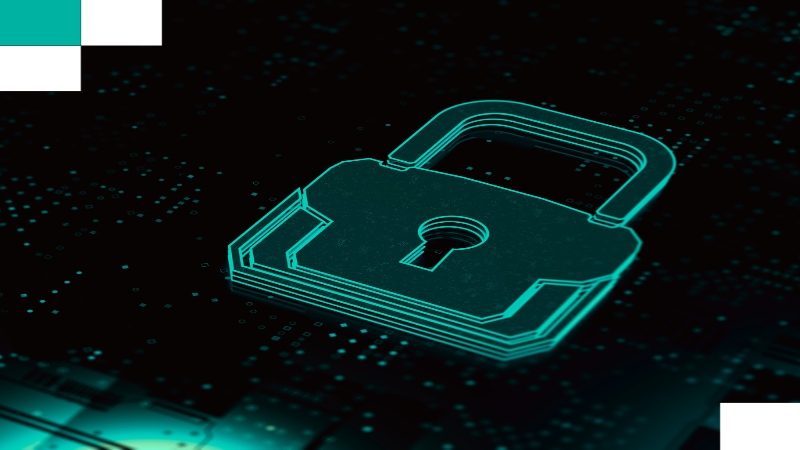In today’s rapidly evolving digital landscape, cyber threats are not just a concern for large enterprises. Small and medium-sized businesses are just as likely to be targeted by malicious actors. From ransomware attacks to data breaches, no organisation is immune. The stakes are high, and the cost of unpreparedness can be catastrophic, leading to financial losses, reputational damage, and regulatory penalties.
This is why every business, regardless of size, must have a clear and actionable cyber security incident response plan. A well-defined plan ensures that your organisation can quickly detect, contain, and recover from security incidents, minimising disruption and mitigating damage. In this article, we’ll explore the key components of an effective incident response plan and how to implement one tailored to your business needs.
Key Components of an Incident Response Plan
At its core, a cyber security incident response plan is a structured framework for managing and mitigating security incidents. To ensure its effectiveness, the plan must include the following six key components:
1. Preparation
Preparation is the foundation of any successful incident response strategy. This phase involves defining policies, procedures, and tools required to handle incidents effectively. Key steps include:
- Establishing an incident response team.
- Implementing security monitoring tools such as endpoint detection and response (EDR) or a security information and event management (SIEM) platform.
- Conducting risk assessments to identify critical assets and potential threats.
- Ensuring employees are trained to recognise and report suspicious activities.
2. Detection
Early detection is critical to minimising the impact of a security breach. This phase focuses on identifying potential incidents through:
- Security monitoring tools (e.g., SIEM systems and IDS).
- User reports of suspicious activity.
- Analysis of log files and alerts.
Having a robust detection system ensures that threats are identified before they escalate. Learn more about host intrusion detection solutions.
3. Containment
Once an incident is detected, the priority is to contain it to prevent further damage. This may involve:
- Isolating affected systems or networks.
- Blocking malicious IP addresses or domains.
- Disabling compromised accounts.
Effective containment minimises the scope of the attack, giving the team time to plan the next steps without the threat spreading further.
4. Eradication
After containing the threat, it’s essential to eliminate its root cause. This may involve:
- Removing malware or infected files.
- Patching vulnerabilities.
- Strengthening access controls to prevent recurrence.
5. Recovery
In the recovery phase, organisations work to restore normal operations. Key activities include:
- Restoring systems and data from secure backups.
- Testing systems to ensure they are secure.
- Monitoring for residual threats to confirm the environment is safe.
6. Lessons Learned
The final phase focuses on improving the organisation’s response to future incidents. Conduct a post-incident review to identify:
- What went well during the response.
- Areas for improvement.
- Steps to enhance the incident response plan.
This phase ensures continuous improvement and builds a stronger defence for future threats.
Assigning Roles and Responsibilities in Incident Response
An effective incident response plan relies on a well-coordinated team with clearly defined roles and responsibilities. Without this clarity, confusion during an incident can delay critical actions and worsen the outcome.
1. The Incident Response Team
The team should consist of representatives from various departments, including IT, legal, HR, and communications. Each member should have a specific role, such as:
- Incident Coordinator: Oversees the response effort and ensures tasks are completed on time.
- IT Security Lead: Investigates the technical aspects of the incident and implements containment and eradication measures.
- Communications Lead: Manages internal and external communication during the incident.
- Legal Advisor: Ensures compliance with regulations and assists in addressing legal implications.
2. Training and Preparedness
Each team member must be trained in their role and participate in regular drills. This ensures that everyone knows their responsibilities and can act swiftly during an actual incident.
Effective Communication Strategies During an Incident
Communication plays a critical role in managing security incidents. Poor communication can lead to misinformation, panic, and further complications. A well-designed incident response plan cyber security should include clear communication protocols for both internal and external stakeholders.
1. Internal Communication
- Use secure communication channels to share information with the incident response team.
- Regularly update key stakeholders, such as senior management, on the progress of the response.
- Provide employees with clear instructions on what to do (or not do) during the incident.
2. External Communication
- Notify affected customers, partners, or third parties promptly if their data or services are impacted.
- Coordinate with legal and communications teams to draft public statements, ensuring transparency without exposing sensitive details.
- If necessary, inform regulatory authorities to remain compliant with data protection laws.
Regularly Testing and Updating Your Incident Response Plan
Even the most comprehensive incident response plan can become ineffective if it’s not tested and updated regularly. Cyber threats are constantly evolving, and so must your plan.
1. Conduct Regular Drills
Simulated exercises, such as tabletop scenarios or penetration tests, help identify gaps in the plan and improve team readiness. Drills should cover a range of potential incidents, including ransomware attacks, data breaches, and insider threats.
2. Review and Update the Plan
Periodically review the plan to ensure it aligns with the organisation’s current infrastructure and threat landscape. Then update the plan to incorporate lessons learned from past incidents or changes in technology and regulations.
3. Involve Third-Party Experts
External consultants can provide valuable insights by conducting independent reviews or assisting with simulations. At FoxTech, our rapid incident response services are designed to help businesses refine their plans and improve their overall cybersecurity posture. Learn more here.
Building a Robust Incident Response Plan for Your Business
Creating a robust cyber security incident response plan is a proactive step toward protecting your organisation from the damaging effects of cyber threats. Here’s how to ensure your plan is both comprehensive and effective:
1. Customise the Plan to Your Business
Every organisation is unique, and your incident response plan should reflect your specific risks, industry regulations, and operational needs. Tailoring the plan ensures that it addresses the most relevant threats and scenarios.
2. Leverage Technology
Invest in advanced security tools, such as intrusion detection and prevention systems (IDPS), to enhance your organisation’s ability to detect and respond to threats. These tools can integrate seamlessly with your incident response plan, providing real-time insights and automation.
3. Foster a Security-First Culture
Ensure that cybersecurity is a priority across all levels of the organisation. Educate employees on recognising potential threats, such as phishing emails, and reporting them promptly.
4. Partner with Experts
Collaborating with a trusted cybersecurity partner, such as FoxTech, ensures that your incident response plan is informed by industry best practices and tailored to your needs. Our comprehensive solutions, from host intrusion detection to incident response planning, help businesses stay one step ahead of cyber threats.
Conclusion
A robust cyber security incident response plan is essential for every business. Whether you’re a small business owner or part of a larger organisation, having a well-structured plan in place ensures that you can detect, respond to, and recover from security incidents effectively.
At FoxTech, we specialise in helping organisations build and refine their incident response capabilities. Our expert-led services, including Rapid Incident Response and Host Intrusion Detection, are designed to provide actionable insights and strengthen your overall security posture.
Don’t wait for a breach to expose your vulnerabilities. Start building your incident response plan today and protect your business from the ever-evolving threat landscape.






